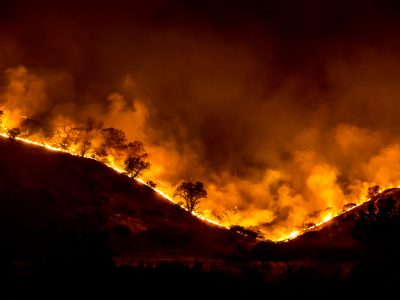Year: 2019
Things to Be Thankful For
Despite the Trump Administration’s efforts, there are rays of hope.
Three years into the Trump Administration, we’re now accustomed to waking up every morning to learn about a new attack on the environment. But there are also some things to be thankful for. Here’s how I started a similar post in 2017, just a year after the 2016 election: “Overall, it’s been a pretty lousy …
Continue reading “Things to Be Thankful For”
CONTINUE READINGGreenhouse Gas Regulations Under the Clean Air Act Are Doomed
Will Kavanaugh Use the Major Questions Doctrine or the Non-Delegation Doctrine to Scrap Them?
The Democratic candidates all have bold plans to attack climate change but face an obvious problem: Congress. Unless the Democrats take the Senate and the Presidency while retaining the House, and unless the Democrats abolish the filibuster, it’s hard to imagine Congress passing comprehensive climate legislation (and even then getting legislation through will be a …
Continue reading “Greenhouse Gas Regulations Under the Clean Air Act Are Doomed”
CONTINUE READINGAnalyzing the revisions to the ESA regulations (Part V)
Overall, the revised regulations increase agency discretion, particularly to avoid consideration of climate change
This is the fifth post in a series. The first post is available here. The second post is available here. The third post is available here. The fourth post is available here. Overall, the biggest takeaways from the proposed regulations are that (a) they are intended to substantially increase the discretion the agencies have in …
Continue reading “Analyzing the revisions to the ESA regulations (Part V)”
CONTINUE READINGJust in From the Supreme Court
The Court refused to hear two cases, but with noteworthy separate opinions.
The Supreme Court declined to hear two cases today. Neither case was earthshaking, but conservative Justices wrote revealing separate opinions. The case with the greatest import for environmental law was Paul v. U.S. The facts of the case had nothing to do with environmental law, but the issue involved has large implications for environmental statutes. …
Continue reading “Just in From the Supreme Court”
CONTINUE READINGHow Does Increasing Wildfire Risk Affect Insurance in California?
Affordability and Availability of Wildfire Insurance Are Less Stable Under Changing Conditions
(This post is part of a series on the issue of climate change and insurance that my colleague Ted Lamm and I are writing, inspired by a symposium that the law schools co-organized with the California Department of Insurance earlier this year. You can find more information on the symposium here. Ted’s prior related post …
Continue reading “How Does Increasing Wildfire Risk Affect Insurance in California?”
CONTINUE READINGHolmes, Brandeis, and the ‘Great Ponds’ Debate
Some issues are perennial, like property rights v. public rights in water.
I suppose most of you, like me, have never heard of the Watuppa Ponds. But in 1888, a battle broke out over the legality of their use to supply drinking water for a nearby city. The issue closely divided Massachusetts’s highest court, and led to a heated debate in the recently launched Harvard Law Review …
Continue reading “Holmes, Brandeis, and the ‘Great Ponds’ Debate”
CONTINUE READINGAnalyzing the revised ESA regulations (Part IV)
The most important revisions to the regulations affect how federal agencies avoid harm to endangered species under Section 7 of the ESA
This is the fourth post in a series. The first post is available here. The second post is available here. The third post is available here. The final regulations I am discussing in this post are available here. These are by far the most significant, but also the most complicated changes to the regulations. Section …
Continue reading “Analyzing the revised ESA regulations (Part IV)”
CONTINUE READINGAnalyzing the revised ESA regulations (Part III)
Regulations would make it easier for agency to avoid protections for threatened species
This is the third post in a series. For the first post, see here. For the second, post, see here. The regulations I am analyzing in this post are available here. Section 9 of the ESA prohibits any person from “taking” a listed species – take is defined in the statute rather broadly, to include …
Continue reading “Analyzing the revised ESA regulations (Part III)”
CONTINUE READINGAnalyzing the revised ESA regulations (Part II)
Regulations would make it harder to protect species and habitat because of climate change
This is the second in a series of posts. For the first post, see here. The regulations I am analyzing in this post are available here. The ESA has a system by which it determines what species warrant protection under the Act, and therefore should be listed as either endangered or threatened. In theory at …
Continue reading “Analyzing the revised ESA regulations (Part II)”
CONTINUE READINGAnalyzing the revised ESA regulations (Intro)
Trump Administration revisions would make significant changes to how Act operates
The Trump Administration in August finalized some significant revisions to the regulations implementing the federal Endangered Species Act (ESA). Those revisions got a fair amount of press coverage, much of it fairly negative, even apocalyptic in tone. See this NY Times editorial “The Species Act, Endangered”. I’ve (belatedly) tried to do a thorough review of …
Continue reading “Analyzing the revised ESA regulations (Intro)”
CONTINUE READING







